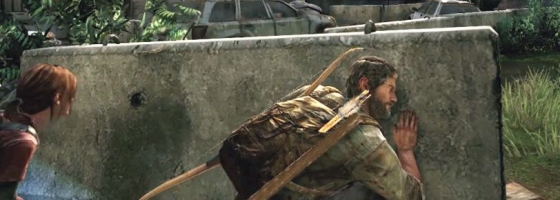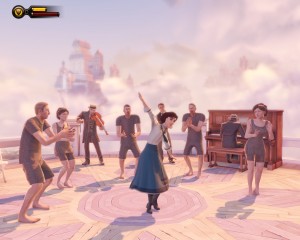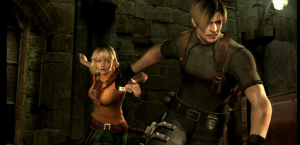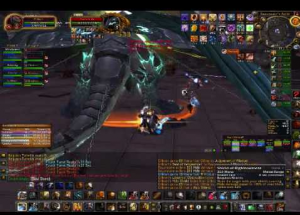One of the worst-received elements of game design over the years would be the dreaded escort missions. Chances are that everyone reading this has at some point played an escort mission in some form. Escort mission design has been seen in different games and genres and I’ve yet to hear any of them receive universal praise. For today’s post, we’re going to try to come up with ways to make them less of a nightmare.
Problem 1: Doesn’t Fit
Escort mission design for the subject of this post is going to be focused on games where you have to lead an NPC to specific points. In these titles, the mission is over if the player is killed or the NPC being escorted is.
These missions can go on for several minutes of the NPC having to be led to specific areas, or having the NPC move on their own. Enemies are programmed to focus on the NPC whenever possible, unless they come in contact with the player first.
There are several reasons why people aren’t fond of escort missions. The first is that they usually exist separate from the main game mechanics. This can also be seen in action games that feature a forced stealth sequence halfway through.
For games like this, the mechanics may not be designed to be used in an escort mission structure. For example, the player may not have the weapon types to properly fight off waves of enemies or protect the NPC.
Going back to the stealth example, it would be like asking the player to sneak around without being able to peer around corners or objects.
Problem 2: Lost of Control
Another point is that they remove control from the player in a sense. The player is not able to progress at their own pace; they must wait for the NPC. In some games the enemies will not stop coming until the NPC completes their mission. Other times, enemies are set values that leave the player with nothing to do until the NPC gets to the next trigger point.
Keeping with that point, the NPC itself is not helping matters. They’re usually slow, unable to assist, and will keep moving towards danger like it has a death wish. Because the NPC has a fixed amount of health, you can enter a negative feedback loop of it taking damage before you can defend it that will slowly chip away before the mission is over.
Problem 3: Lackluster Partner
Even in games that have fully integrated escort mission design, such as Dead Rising or Resident Evil 4, they’re still not looked at as the best parts of the game. Because designing a complex AI partner is usually not in the budget, your partners will always be limited in their utility.
A player can adapt and improve at a game; an AI cannot. We’ve all had cases where the AI will not avoid damage or do the worst thing possible in a fight; requiring you to get them out of trouble.
This problem can be extended out to games built on co-op play with a singleplayer option. In Payday 2 for example, you can play the game with AI partners, but they do not perform any of the mission objectives.
With all that said, let’s go back to the title of this post: Can we Fix Escort Mission Design?
The Solutions?
I know that someone is getting ready to type out: “Just don’t have them, problem solved,” but that’s too easy. I’ve seen and thought up bits and pieces of elements that can make escort missions better, I just can’t think of a game that has done all of it at once.
The first factor should be giving the player more control over the NPC; including speeding them up or slowing them down. The player should be able to dictate the pace of the situation, because they’re the ones supposedly being the guide to the NPC.
Most escort missions become battles of attrition, and it’s easy to start losing if the escort takes too much damage early on. If the player can use healing items, why can’t the escort?
Even though asking for complex AI is a bit out of the question, there should be a way to keep them off of the escort. Many MMOs make use of “tanking” abilities or “aggroing” enemies, and something similar could be used for escort missions.
The most debatable element of escort missions would be having unlimited or limited enemy waves. Many games keep the enemies respawning infinitely until the mission is done; others have set amounts. I’m not a fan of unlimited waves, as they get back to the war of attrition problem.
The biggest solution, and least practical, would be completely different modes for escort missions. Imagine having tower defense-styled situations or controlling turrets to deal with invading enemies. The problem is that designing completely different sections for a game is not always feasible.
A unique situation would be games that use the companion as a form of puzzle solving or progress. Examples would be Resident Evil 4 and ICO. In RE 4, Ashley can be “stowed” in chests while Leon clears out the enemies that would attack her.
With ICO, the game’s pacing swings between guiding your companion through the areas and leaving her to do puzzle solving.
Both cases allow you to leave the companion in an area and focus on other things. What makes this special is that you are technically escorting a character throughout the entire game (or most of it), but they’re not always the central focus of the player.
To the Next Waypoint:
Escort missions are rarely anyone’s favorite part of a game. While some games like the Last of Us have worked with protecting a character, the enemies were designed to ignore Ellie and it’s a stretch to call it “escort mission design.” The same could be said of Bioshock Infinite and how no one targeted Elizabeth despite her aiding the player.
With that said, I’ll leave it to you: Were there any good examples of escort missions? As I’m sure we remember all the bad ones.
If you enjoyed this post, please consider donating to the Game-Wisdom Patreon campaign. Your donations can help keep things going and allow me to produce more great content. Follow me on Twitter @GWBycer, and you can find daily video content on the Game-Wisdom YouTube channel.





